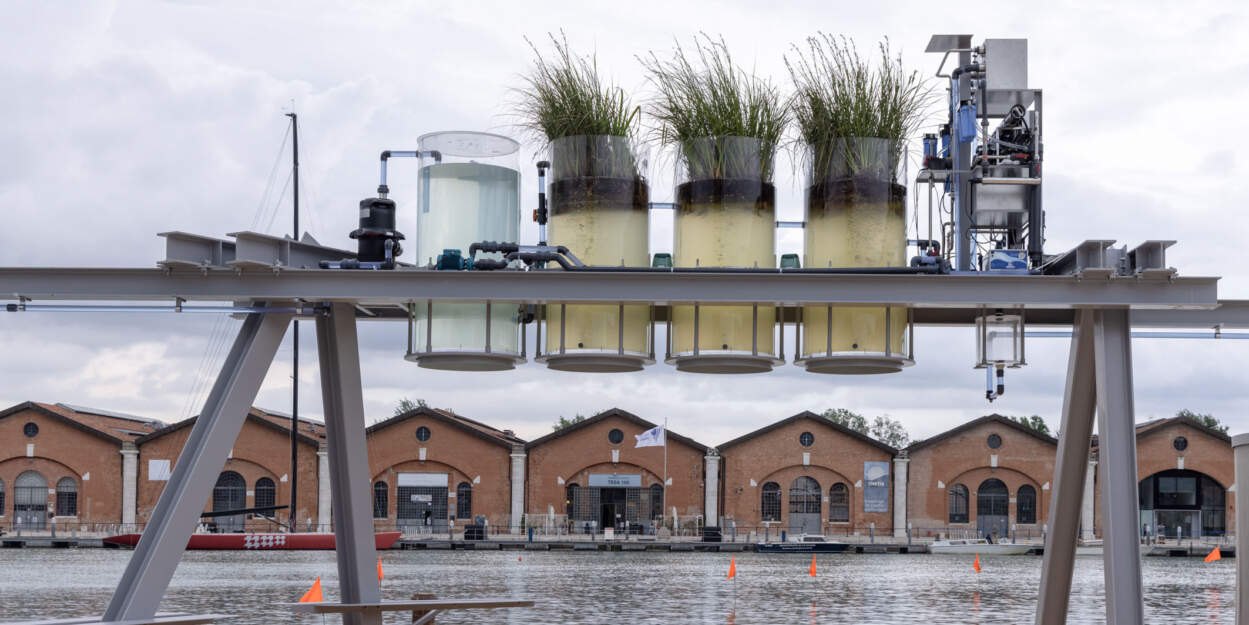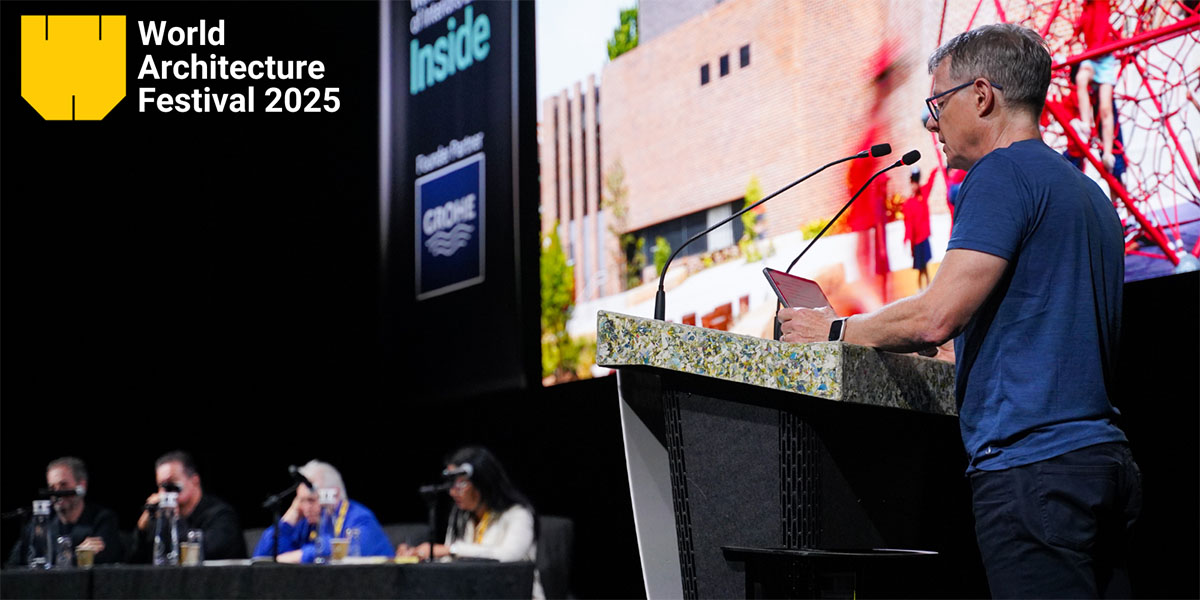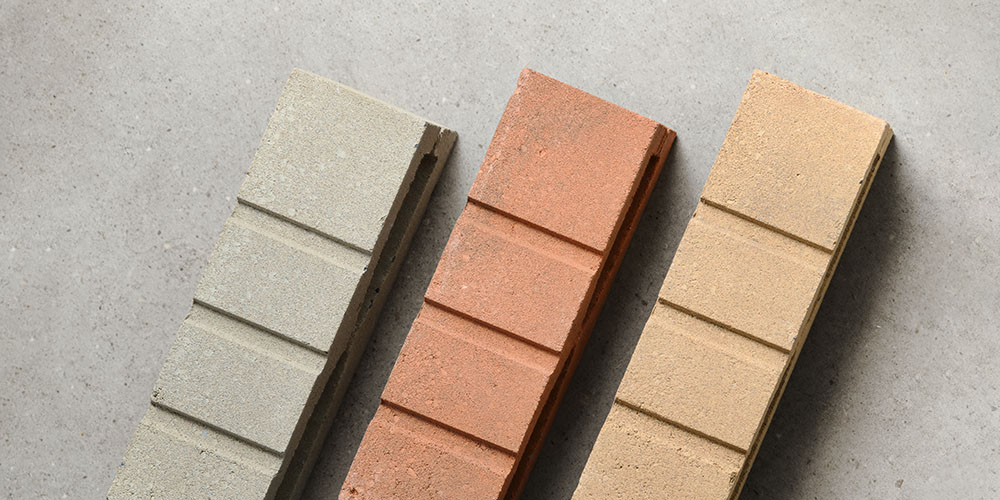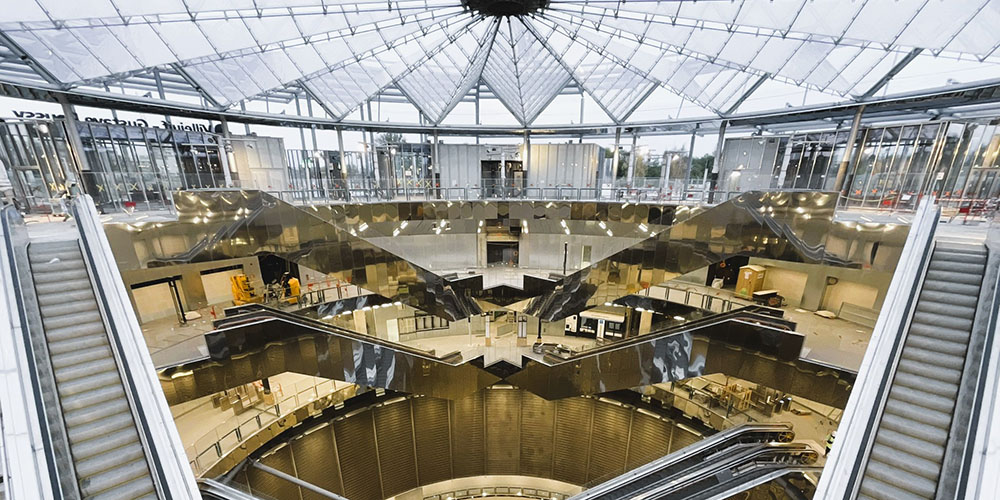With its new “i8” wood hybrid building in the “iCampus im Werksviertel” designed by the Danish architecture firm C.F. Møller Architects, the Munich developer R&S Immobilienmanagement GmbH is providing a sustainable answer to the questions of tomorrow’s working worlds.
Founded in 1922, C.F. Møller Architects, is one of the most renowned and largest Danish architectural offices specializes in, among other things, buildings with wooden architecture.
An approximately 20,000-square-metre wood hybrid building has been planned on August-Everding-Straße as the south-eastern gateway to the “iCampus im Werksviertel”.
The i8 building is designed to reflect both the heritage of the former industrial estate and the youthful character of the up-and-coming new Werksviertel district through an industrially colored and contemporarily interpreted architectural language.
The timber architecture will contribute to an enhanced energy balance and provide a pleasant working atmosphere with a more natural indoor climate.
As an optimal complement to the wooden elements and contributing a particularly natural effect, the façade of the “i8” will be made of recycled aluminum in a muted shade of green.
In addition, open foyers and floating staircases, as well as a park with historical trees invite future employees to work productively and feel at ease, while letting plenty of light into the interior.
The spatial and structural sub-division of the interior spaces is based on the idea of combining three identical office zones that allow for flexible spaces. These are brought together by way of three different façade types.
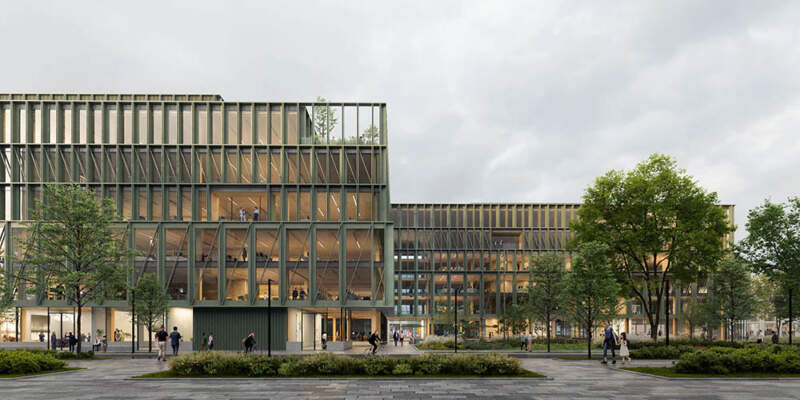
The façade system achieves both energy savings through sun protection as well as natural ventilation.
“The “i8” is a versatile “green building” that makes a positive contribution to the overall eco-balance.
Most importantly, however, it can be adapted to the changing user requirements. The architecture promotes collaboration and networking, as is reflected in the name. The “i” stands for innovation. Situated on periphery of the Werksviertel district, and as a central element of the “iCampus im Werksviertel” with its ten buildings, the i8 wood hybrid building immediately attracts attention as a striking structure with its own identity.
Inside “i8” the architectural language is firmly rooted in innovation as its foundation.
Thanks to the high share of wood in the interior, the wood-hybrid construction ensures a pleasant indoor climate. In order to underline its efforts to create a sustainable, energy-saving building, R&S Immobilienmanagement GmbH is also aiming for the highest level of certification awarded for LEED (Leadership in Energy and Environmental Design) and the DGNB (German Sustainable Building Council).
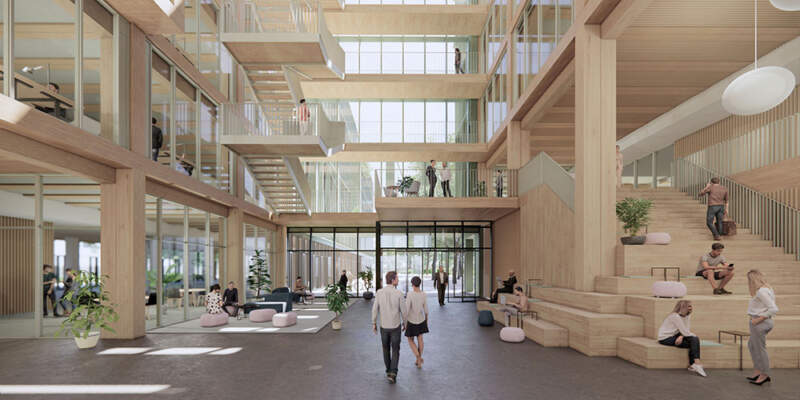
The offices have a clear headroom height of three meters and optimized depths to ensure maximum daylight. An atrium made of warm wooden materials facilitates networking, knowledge exchange and visual contact between the different floors and units.
The floor plan places a strong emphasis on flexibility: The rooms can be converted into individual offices, open-plan offices or a combination of both concepts.
“The project shows how architecture is being elevated to new heights at the “iCampus im Werksviertel”, but also in the entire Munich office market. With this project, we are factoring in the exponentially rising significance of sustainability and climate change through an innovative wood-hybrid construction that massively curbs the building’s CO2 emissions,” explains Moritz Eulberg, project manager at R&S Immobilienmanagement GmbH.
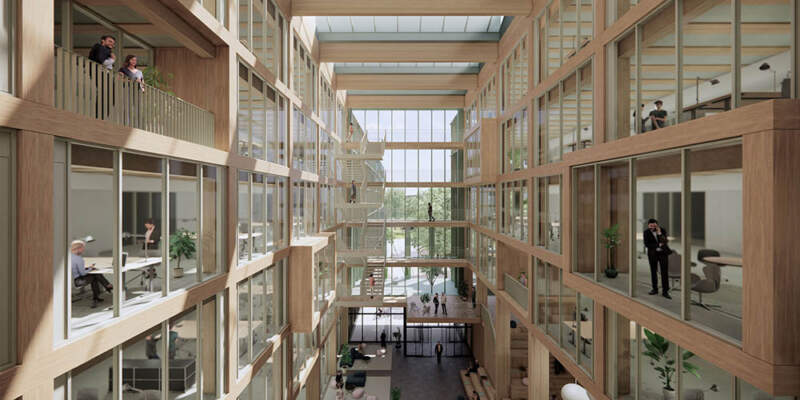
This wood-hybrid construction has a positive effect on the eco-balance of the building and ensures a healthy indoor climate.
“We are proud to be the first to construct a wood-hybrid building and an interior with a large share of wood on this historic industrial site, thereby melding German and Scandinavian traditions. With the “i8” we are combining the principles of healthy living with the concept of agile and creative work” as Mads Mandrup Hansen, partner and architect at C.F. Møller Architects, explains. “By replacing concrete and steel in load-bearing structures with wood, it will be possible to reduce the carbon content of buildings by 30 to 50 per cent“. Every cubic meter of wood used in the building stores 750 kilograms of carbon from the atmosphere.
According to C.F. Møller Architects, wooden buildings play an important role in minimizing the environmental impact of the building sector. In new buildings, the energy and carbon emissions generated in the production of building materials (often referred to as “embodied carbon”) often exceed the equivalent of heating the building for 50 years.
To learn more about timber architecture see our series of article about “Timber buildings: evidence, best practices and advantages” with the participation of C.F. Møller Architects and many other renowned architecture firms such as MVRDV, Schmidt Hammer Lassen, White Arkitekter, Waugh Thistleton Architects, Jestico + Whiles, Mei, PLP Architecture, Krook & Tjäder, Henning Larsen Architects, KAAN, Kjellgren Kaminsky, dRMM, Wingårdhs, MVSA and EFFEKT about their approaches to timber architecture.

